|
|
|
Introduction of Mumbai |
|
Welcome to the city that never sleeps!
Pulsating, Alive, On the Move, Vibrant, Fun - this is Mumbai or as it
is still frequently referred to Bombay. The most modern city in
India, it captures the spirit of the changing pace set by
liberalization and modernisation.
Once a cluster of seven islands, Mumbai was presented to King Charles
II in 1661 as part of the dowry when he married Princess Catherine de
Braganza of Portugal.
Over the years, as colonialism gave way to independence, Mumbai has
transformed itself into an entity with thriving markets, business
houses and many different communities reflecting a cosmopolitan and
trendy atmosphere rarely seen elsewhere. On the surface, it represents
the ever-changing face of today's India - the old coupled with the
dynamic new, and yet at its very core, the heart of the city is
steeped in Indian customs and values. |
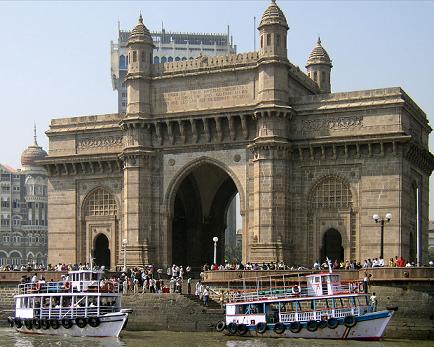
Gateway
of India |
|
It is the
capital of Maharashtra state, and its official language is Marathi
although English and Hindi are widely spoken and understood. The
fast-paced life has given rise to hordes of "fast-food outlets" on
almost every road, offering lip-smacking choices of Mumbai's very own
pau bhaji, bhel puri and kababs. There is no dearth, though, of
multi-culinary delicacies dished out in posh restaurants by expert
chefs. Mumbai is a shopper's delight with bargain buys, exclusive
boutiques, ethnic markets and mini bazaars. This busy city is also the
hub of a thriving cultural life, with a constant stream of
performances in music, dance and drama. The seat of the Hindi film
industry, known locally as Bollywood, it produces the largest number
of films in the world. Mumbai caters to the adventurous and the
romantic through its sporting activities, nightclubs, pubs, theatres,
beaches and restaurants. Old and new, rich and poor, classical and
modern -- its all here for you to savour and enjoy! |
|
|
|
History in Mumbai |
|
Following the first war of Independence
in 1857, the East India Company was accused of mismanagement, and
Bombay reverted to the British crown. With the outbreak of the
American Civil War in 1861, and the opening of the Suez Canal in 1869,
exports, specially cotton, from Bombay became a major part of the
colonial economy.
The Great Indian Peninsular Railway facilitated travel within India.
This network of commerce and communication led to an accumulation of
wealth. This was channelled into building an Imperial Bombay by a
succession of Governors. Many of Bombay's famous landmarks, the Flora
Fountain and the Victoria Terminus, date from this time.
The water works, including the Hanging Gardens and the lakes were also
built at this time. The Bombay Municipal Corporation was founded in
1872. However, this facade of a progressive and well-governed city was
belied by the plague epidemics of the 1890s. This dichotomy between
the city's symbols of power and prosperity and the living conditions
of the people who make it so continues even today.
The construction of Imperial Bombay continued well into the 20th
century. Landmarks from this period are the Gateway of India, the
General Post Office, the Town Hall (now the Asiatic Library) and the
Prince of Wales Museum. Bombay expanded northwards into the first
suburbs, before spreading its nightmare tentacles into the the
northern suburbs. The nearly 2000 acres reclaimed by the Port Trust
depressed the property market for a while, but the Backbay reclamation
scandal of the '20s was a testament to the greed for land.
The freedom movement reached a high pitch of activity against this
background of developing Indian wealth. Gandhi returned from South
Africa and reached Bombay on January 12, 1915. Following many
campaigns in the succeeding years, the end of the British imperial
rule in India was clearly presaged by the Quit India declaration by
the Indian National Congress on August 8, 1942, in Gowalia Tank Maidan,
near Kemp's Corner. India became a free country on August 15, 1947. In
the meanwhile, Greater Bombay had come into existence through an Act
of the British parliament in 1945. |
|
|
|
|
|
Tourist Attraction in Mumbai |
|
Gateway
of India
Gateway of India is regarded to be the starting point for most
tourists who want to travel around the Mumbai city. This 26m-high
structure has four turrets and intricate latticework carved into the
yellow basalt stone. Mumbaites, as well as the foreign tourists come
down to this place in the evening and take a cool rest from day's
exhausting work schedules.
Marine Drive
Marine Drive is the place where Mumbaites hang out to cool down a
while from the steamy hurried and busied life. As street lamps orderly
line up on the edge of the beach, it is also known as called Queen's
Necklace. Several Hindu religious ceremonies are taking place at
Chowpatty like annual thread-tying ceremony, nariel-purnima and Ganesh
Chaturthi immersions. Stalls on the beach, selling Bhelpuri, Kulfi and
Paan make the chowpatty zesty.
Juhu Beach
Juhu is one of the most popular and posh beaches of India. This
fizzing beach on the shores of Arabian Sea is the place where one can
find the bungalows of Bollywood stars. Tourists can enjoy horse and
donkey rides, dancing monkeys, acrobats, cricket matches, toy sellers
etc. here.
Essel
World
Essel World offers over 40 exciting rides, games, and attractions. The
Water Kingdom is said to be the largest of its kind in Asia. It is a
perfect destination for a one-day holiday.
Mani Bhawan
It has Gandhian literature, photographic exhibits, framed letters and
3-D tableaux of key events in Gandhi's life are displayed here.
Gandhi's room and belongings including his books, his trademark 'Charkha'
(spinning wheel) and 'Charpoy' (rope bed) are displayed here. It is
place, where Gandhi first learned how to use the spinning wheel.
Jehangir Art Gallery
There is huge rush of artistes in this gallery to show one's works.
Many of the artistes have to wait a couple of years to exhibit their
works in this gallery. The building of the gallery is an enormous
beautiful mansion. Jehangir Art Gallery is one of the Mumbai's
well-known art galleries.
Chowpatty
Another sandy attraction of Mumbai is the Chowpatty beach in the
suburbs of the city. Chowpatty is perhaps the most famous beach of
Mumbai, flooded by the usual hustle and bustle of roadside vendors,
screaming kids, Ferris wheels, pony rides, wayside astrologers, monkey
shows, Moreover, the bhelpuri shops and sometimes the film shoot or a
street play also adds to the festive atmosphere of the beach.
Bollywood
Next to Hollywood, Mumbai is world's largest production centre for
films. The Film City: 'Bollywood', as it is called, produces the
second most number of films in the world every year.
|
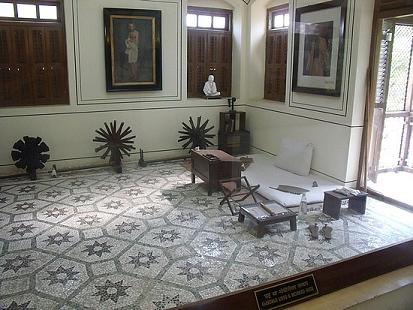 |
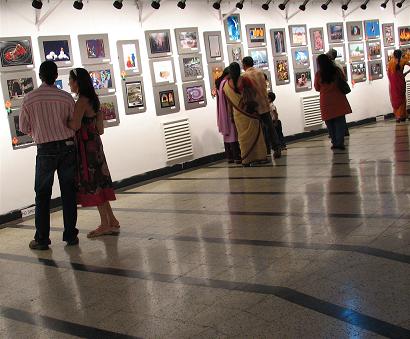 |
|
Mani Bhavan
Gandhi |
Jahangir Art
Gallery |
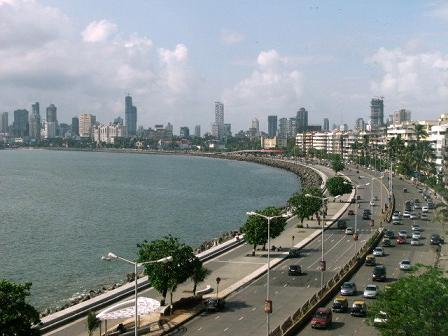 |
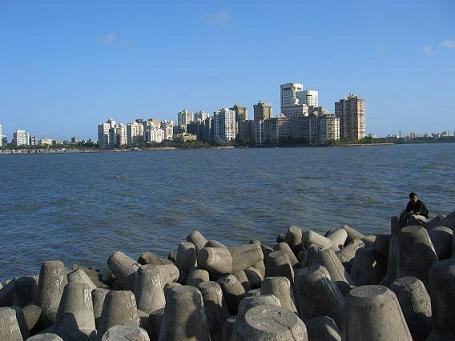 |
|
Marine
Drive |
Marine
Drive |
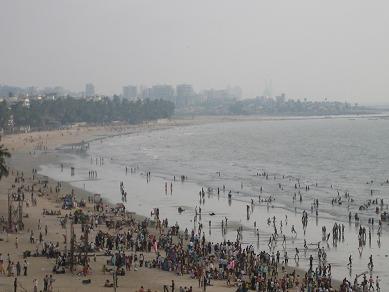 |
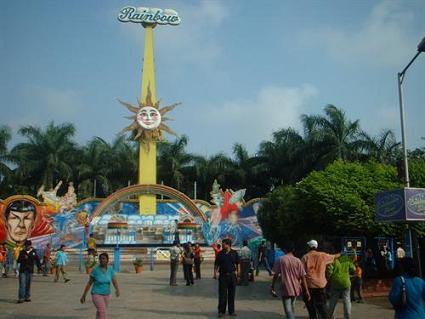 |
|
Juhu
Beach |
Essel
World |
 |
 |
|
Chow
patty
Beach |
Chow
patty
Beach |
|
Siddhivinayak Temple
The temple has a Kalash, which is a pointed dome of 12 feet high
Gabhara (sanctum sanctorum) weighing 1500 kg and plated in gold. So,
it facilitates the 'Darshan' of Sri Siddhivinayak from either the area
surrounding the Gabhara or the stage (Sabha Mandap) constructed to
conduct pujas and festivities. The temple dates back to 18th Century.
Vinayak is considered to be one of the Ashta Vinayak shrines of
Maharashtra, celebrating eight instances of legends related to Ganesha.
Prince of Wales Museum
The Prince of Wales museum Was built in the year 1914, it is
surrounded by beautiful landscapes forming an ideal getaway. The
museum houses art, sculpture, rare coins, and old firearms and a
priceless collection of miniature paintings. This museum is regarded
as one of the best museums in the country.
Elephanta
Caves
Elephanta caves are in the magnificent Elephanta Island, which is 11 km
from Mumbai. It has beautiful carvings, sculptures, and a temple of the
Hindu God, Lord Shiva. This UNESCO World Heritage Site has been a
commercial, military and religions centre for centuries having traces of
early Buddhist culture.
The Elephanta caves date back to 9th - 12th centuries. With the
Brahminical resurgence during the reign of Gupta dynasty in 3rd century
AD, these great cave dedicated to Lord Shiva exploded into existence at
Elephanta. According to legends and historians, great warrior prince of
Chalukya dynasty Pulkesin ll raised the shrine to celebrate his victory.
Some historians also suggest that the Kalchuri King Krishnaraja built
these caves in 6th century AD.
It seems that the same craftsmen and sculptors who had worked on the
Kailasa Temple and other adjoining Buddhist caves at Ellora were employed
at Elephanta. It is believed that the caves were used as target practice
after they constructed a fort and put a flag to ward off pirates.
|
 |
 |
|
Elephanta
Cave |
Elephanta
Cave |
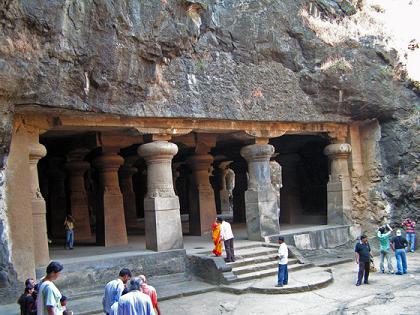 |
 |
|
Elephanta
Cave |
Elephanta
Cave |
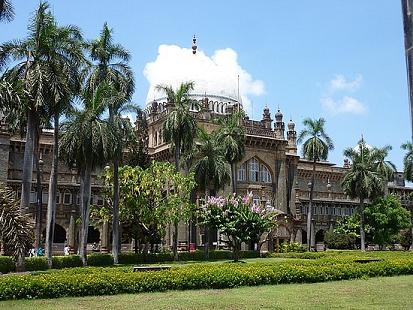 |
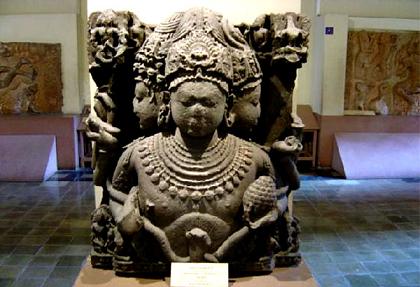 |
|
Prince of
Wales Museum |
Prince of
Wales Museum |
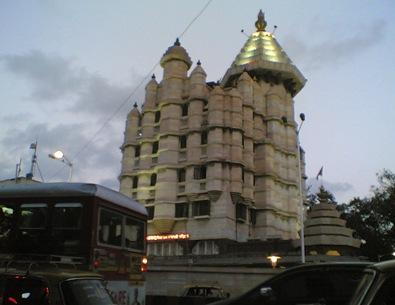 |
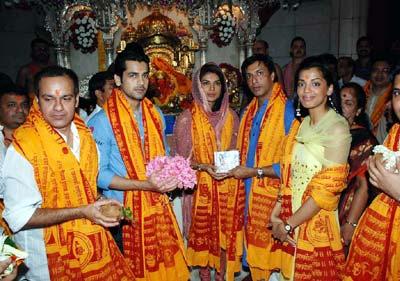 |
|
Siddhivinayak Temple |
Siddhivinayak Temple |
|
|
How to get here |
|
By Air
Mumbai has more flights connecting it than even the national
capital New Delhi. All major airlines fly to and from Mumbai to most
of the important cities of the world. The international terminal of
Mumbai is known as Sahar and the domestic terminal is known as Santa
Cruz.
By Bus
The most of the neighboring states like Goa, Gujarat, Karnataka
and Madhya Pradesh have their state bus company offices located here.
By Rail
Central Railways runs services to the east and north, the Western
Railways also runs trains to North India from Churchgate and Central
stations. Some of the important connections by rail. |
|
|
|
You will visit
“Mumbai”
during the below Tours of Rajasthan |
|
 11 Days Golden
Triangle and Ajanta Ellora Tour (Including Mumbai)
11 Days Golden
Triangle and Ajanta Ellora Tour (Including Mumbai)

11 Days / 10
Nights
Delhi - Agra -
Fatehpur Sikri - Jaipur - Udaipur - Mumbai - Aurangabad - Ellora -
Ajanta - Mumbai |
|
|
|
|
|
|
|
|
|